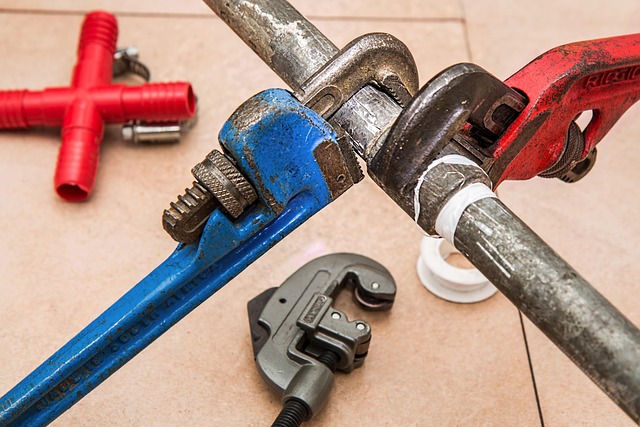Identifying foundation cracks, settlement, water damage, and structural weaknesses is crucial for residential foundation repair. Regular inspections prevent costly repairs by catching issues early. Address improper drainage, understand soil conditions, detect termite infestations, evaluate support systems, leverage advanced technology, and maintain proper drainage systems to ensure home stability and longevity.
Residential foundation repair is a critical aspect of maintaining home integrity. This comprehensive guide delves into key indicators that signal potential issues with your home’s foundation, from identifying cracks and water damage to understanding soil conditions and termite infestations. Learn how to evaluate structural weaknesses, detect improper drainage patterns, and recognize the signs of sinking foundations. Additionally, discover advanced technology in detection methods and preventative measures to safeguard your investment in the future.
Identifying Foundation Cracks and Settlement

Identifying foundation cracks and settlement is a crucial step in assessing potential residential foundation repair needs. Cracks in a foundation wall can vary in appearance, from hairline fractures to larger, visible gaps. These cracks often develop due to soil settlement, shifting ground, or structural issues within the building. Regular inspection of your home’s foundation is essential, as even minor cracks can signal more significant underlying problems.
When examining the foundation, look for signs of uneven floors, walls that are not straight, and doors or windows that stick or do not align properly. These indications may suggest settlement or movement of the foundation, which requires prompt attention from professional residential foundation repair services to prevent further damage and ensure structural integrity.
Uncovering Signs of Water Damage

Water damage is a common issue that can lead to significant problems for residential foundation repair. Uncovering signs early on is crucial in mitigating potential risks and preventing further deterioration. One of the most visible indicators is the presence of mold or mildew, which often grows in damp and dark areas. Peeling paint, especially around windows and doors, can also be an apparent signal, as water seepage may have compromised the integrity of the surface.
Other subtle signs include musty odors, warped floors, and distorted walls or ceiling tiles. If you notice any of these issues, it’s essential to inspect further. Check for leaks in plumbing fixtures, roof areas, or around windows, as these are common sources of water intrusion. Regular maintenance and prompt action when addressing water damage can save homeowners from costly repairs and ensure the structural integrity of their homes.
Evaluating Structural Weaknesses

When assessing a residential foundation repair, evaluating structural weaknesses is a critical step. This involves meticulously examining the foundation for any signs of damage, cracks, or uneven settling. Such weaknesses can indicate broader issues within the building’s structural framework. By identifying these early on, homeowners and professionals alike can take proactive measures to prevent further deterioration.
Regular inspections play a pivotal role in this process. They enable the detection of subtle changes that might otherwise go unnoticed. In cases where significant structural weaknesses are identified, specialized technicians can provide tailored solutions. These range from minor repairs like crack sealing to more extensive interventions such as underpinning or piering, designed to stabilize and fortify the foundation, thereby ensuring the longevity and safety of the residence.
Detecting Improper Drainage Patterns

One of the key indicators of a sinking foundation is improper drainage patterns around your home, particularly in areas adjacent to the structure. Over time, inadequate drainage can lead to water pooling and seeping into the soil beneath your house, exacerbating foundation issues. During inspections, look for signs such as uneven ground levels, visible cracks in the soil or grass, or water collecting near the foundation walls. These are red flags indicating that water is not draining properly, which could contribute to long-term residential foundation repair needs.
To mitigate this problem, ensure proper grading around your property, directing rainwater away from your home’s foundation. Regularly inspect and clean drainage systems like downspouts and gutters to prevent clogs, ensuring efficient water flow. Addressing improper drainage patterns early on can help prevent more severe foundation sinking issues that may require costly residential foundation repair solutions.
Understanding Soil Conditions Impact

The stability and integrity of a residential foundation repair heavily rely on understanding soil conditions. Different types of soil have distinct characteristics that can impact the foundation’s long-term health. For instance, expansive soils, known for their tendency to swell and contract with moisture changes, can exert significant pressure on foundations, leading to cracks or misalignment. Conversely, poorly compacted or loose soils may not provide adequate support, causing settling issues over time.
Regular inspections are crucial in identifying early signs of soil-related problems. Observing any visible signs of foundation movement, such as cracks in walls or floors, uneven surfaces, or doors and windows that stick, can indicate underlying soil conditions affecting the foundation. Prompt action, including professional assessment and necessary repairs, is essential to mitigate potential damage and ensure the structural integrity of a home, thereby preventing costly residential foundation repair down the line.
Recognizing Termite Infestations

Termite infestations can often go unnoticed until significant damage has been done, making early detection crucial for residential foundation repair. One of the clearest signs is wood structural damage, such as hollow-sounding walls or floors. Termites prefer softwood and will create tunnels within the material, causing it to weaken over time. As they feed, termites leave behind a distinctive scent that can be detected by trained professionals.
Regular inspections are essential for homeowners to stay ahead of termite infestations. Professionals use tools like moisture meters and wood probes to identify potential entry points and signs of activity. In addition to structural damage, keep an eye out for small piles of sawdust (often called “termite frass”) near your foundation or in affected areas. This is the termites’ waste product and can indicate their presence. Early intervention is key to preventing extensive residential foundation repair issues caused by these relentless pests.
Assessing Effective Foundation Support Systems

When assessing the integrity of a structure, especially in the realm of residential foundation repair, understanding the effectiveness of support systems is paramount. These systems play a crucial role in maintaining the stability and longevity of a building’s foundation. By examining the various components that contribute to a robust support network, homeowners and professionals can identify potential issues early on. One key indicator is the condition of footings, which serve as the foundation’s direct connection to the soil, distributing weight evenly. Cracks or shifting in footings could signal underlying problems requiring immediate attention.
Additionally, the overall layout and design of the foundation should be evaluated. A well-designed foundation incorporates adequate reinforcement and allows for proper drainage, preventing water damage that can weaken structural support. Regular inspections are essential to detecting signs of settlement, heave, or other disturbances, enabling prompt residential foundation repair measures before more severe complications arise.
Advanced Technology in Detection Methods

The evolution of technology has significantly enhanced the capabilities of detecting foundation sinking, a critical aspect of residential foundation repair. Modern methods employ sophisticated sensors and monitoring systems that provide real-time data on ground movement and structural integrity. These advanced tools allow professionals to identify subtle changes in foundation levels, cracks, or uneven settling long before they become visible.
By utilizing innovative technologies like GPS, lidar, and robotic total stations, experts can map and track foundation movements accurately. This early detection enables proactive measures, minimizing potential damage and costly repairs associated with advanced foundation sinking. Advanced technology offers a more efficient and precise approach to residential foundation repair, ensuring structures remain stable and secure over time.
Preventative Measures for Future Repairs

To prevent future residential foundation repair needs, regular maintenance is key. One effective measure is inspecting the foundation for any signs of damage or settlement at least once a year. Addressing small issues early can often prevent them from escalating into costly repairs. For example, repairing cracks in the foundation wall or addressing moisture problems can stop further deterioration.
Additionally, ensuring proper drainage around the home is crucial. Redirecting water away from the foundation using proper grading and installing drainage systems can help prevent water damage, which is a leading cause of foundation problems. Regularly checking and cleaning gutters and downspouts is an easy way to maintain adequate water flow away from the house’s structural support system.
